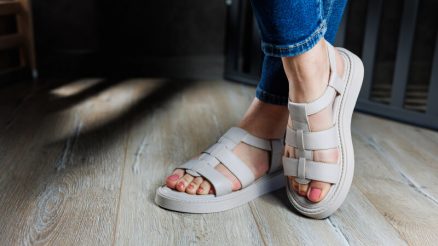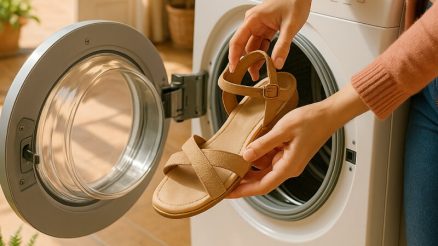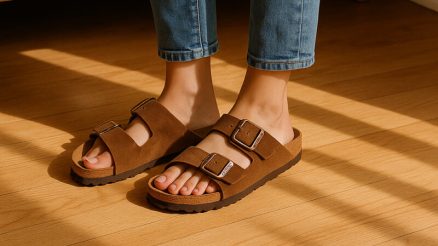There’s nothing quite like the feeling of slipping into a brand-new pair of leather sandals. The rich smell, the pristine look – it’s a summer dream. However, that dream can quickly turn into a nightmare of blisters, rubbing, and general discomfort if you don’t properly break them in. New leather, while beautiful, can be stiff and unforgiving. But fear not! With a little patience and a few smart strategies, you can transform those rigid beauties into custom-fit comfort zones without enduring weeks of agony.
Here’s a detailed guide on how to break in new leather sandals pain-free:
1. The “Little and Often” Method: Your Best Friend
This is arguably the most important rule. Resist the urge to wear your new sandals all day, every day, right out of the box.
- Start Small: Begin by wearing them for short periods, perhaps just 15-30 minutes at a time, around the house.
- Increase Gradually: Over the course of a week or two, slowly increase the wear time. Go for a quick errand, then a slightly longer walk.
- Listen to Your Feet: As soon as you feel any discomfort or rubbing, take them off. It’s better to stop early than to develop a blister that will set back your progress.
2. Prepare Your Feet (and the Sandals)
A little prep work goes a long way in preventing friction and softening the leather.
- Wear Socks (Yes, Really!): While it might look a bit quirky, wearing thin cotton socks with your new sandals for short periods (especially around the house) can help stretch the leather slightly and prevent direct skin-on-leather rubbing. This is particularly effective for straps.
- Moisturize Your Feet: Well-hydrated skin is less prone to friction. Apply a good moisturizer to your feet before putting on your sandals.
- Use Anti-Blister Balms or Tapes: Apply anti-blister sticks or petroleum jelly to common hot spots like the back of the heel, the sides of your toes, or under straps that tend to rub. You can also use moleskin or specialized blister tape on areas where you know you’re prone to friction.
- Heat Them Up (Carefully!): Warmth can make leather more pliable. You can gently warm the leather straps or footbed with a hairdryer on a low setting for 20-30 seconds. While the leather is warm and slightly softer, put them on and walk around until they cool. Be extremely cautious not to overheat the leather, as this can damage it. Keep the hairdryer moving.
3. Strategically Stretch and Soften the Leather
Beyond just wearing them, you can actively work on softening specific areas.
- Massage the Leather: Use your hands to gently massage and flex the leather straps and any rigid parts of the sandal. This helps to break down the stiffness in the fibers.
- Use a Leather Conditioner/Softener: Invest in a good quality leather conditioner. Apply a small amount to the parts of the sandal that feel stiff or are rubbing. This will hydrate the leather, making it more supple. Always do a patch test on an inconspicuous area first to ensure it doesn’t discolor the leather.
- The Ice Bag Method (for specific spots): If a particular spot is really tight, fill a sturdy Ziploc bag with water, seal it well, and place it inside the sandal where it needs to stretch (e.g., inside a strap or the toe box). Place the sandal (with the water bag inside) in your freezer overnight. As the water freezes, it expands, gently stretching the leather. Let it thaw completely before removing the bag.
- Shoe Stretchers: For more stubborn areas, a shoe stretcher (specifically designed for sandals if possible) can be very effective. Insert it and leave it in for a few hours or overnight to gently expand the leather.
4. Don’t Forget the Soles!
It’s not just the straps and upper leather that need breaking in; the footbed and sole also need to conform to your foot.
- Walk on Varied Surfaces: When you do start wearing them outside, try walking on different surfaces – pavement, grass, perhaps even a short walk on gravel. This helps the sole to flex and adapt to your gait.
- Weight Bearing: Simply walking in them is the best way to mold the footbed to the unique contours of your feet.
5. Be Patient and Persistent
Breaking in new leather sandals isn’t an overnight process, especially for high-quality, thick leather. It could take anywhere from a few days to a couple of weeks, depending on the stiffness of the leather and how often you wear them.
- Don’t Rush: Rushing the process will only lead to pain and potentially damaged sandals.
- Consistency is Key: Regular, short wears are more effective than one long, painful wear.
By following these tips, you’ll be able to enjoy your beautiful new leather sandals in comfort, without the dreaded breaking-in pain. Happy walking!







